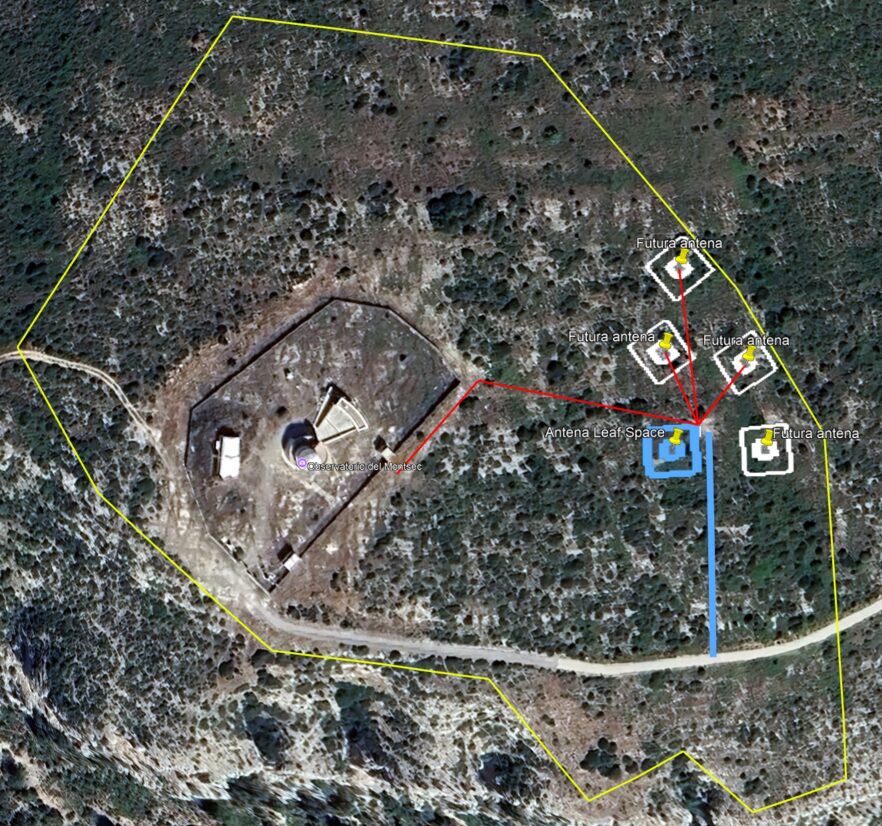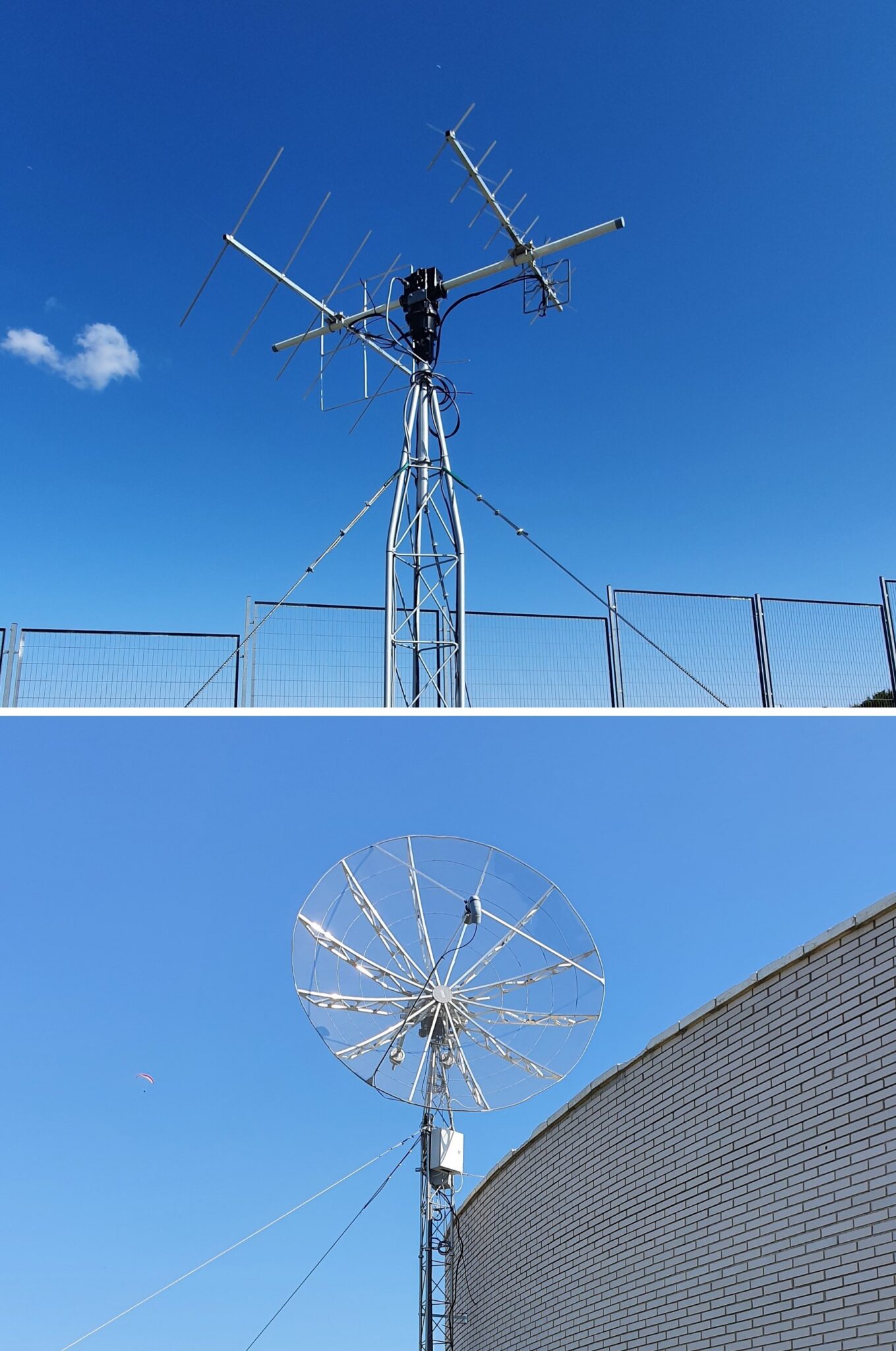Sant Esteve Teleport
In recent years, efforts to equip the Montsec Observatory with satellite communication capabilities have taken a further step with the formalisation of the Sant Esteve Teleport.
Over the past few years, significant efforts have been made to equip the Montsec Observatory (OdM) with the capability to host satellite communications stations. This project has been consolidated with the formal establishment of the Sant Esteve Teleport at the OdM, promoted within the framework of the NewSpace Strategy of the Government of Catalonia, in collaboration with the IEEC.
The Sant Esteve Teleport is the area that provides services to ground communication stations. The Sant Esteve Teleport is a facility committed to serving the region and promoting the space sector. Additionally, it is registered as a collaborating infrastructure of the ESA Phi-labNET Spain in Barcelona, a programme coordinated by the IEEC and driven by a consortium of 12 universities and research and innovation centres.
The privileged location of the OdM, free from obstacles on the horizon and with low radio-frequency interference, makes it an ideal site for the ground communications station.
The Montsec Satellite Ground Station (SGSMontsec) was the first to be installed in the Observatory and the precursor to the Teleport. With the launch of the Sant Esteve Teleport, a new tri-band station is currently being installed, and new antennas are expected to be added progressively.

Tri-band station
This telecommunications station, with a dish approximately 4 metres in diameter, will be triple-band. In other words, it will provide uplink and downlink capabilities in the S band, as well as downlink in the X and Ka bands of the radio spectrum.
Leaf Space, an expert in satellite connectivity services on a global scale, will install and operate this antenna in collaboration with the IEEC in the near future.
The station will provide uninterrupted horizon-to-horizon coverage, with no blind spots, and high precision in satellite tracking. Its multi-band operation capability enables a single platform to track any standard Earth Observation satellite. The antenna will be equipped with a protective radome to ensure operations under any weather conditions.
Satellite missions promoted under the NewSpace Strategy—such as the Menut mission and GENEO-2, which is set to launch soon—will use this station for mission control and data downlink. The station will also support the PhotSat mission, the satellite developed by the IEEC together with its academic and industrial ecosystem.
SGSMontsec

The Montsec Satellite Ground Station (SGSMontsec) consists of a UHF/VHF antenna and an S-band antenna. Designed and installed by the NanoSat Lab at the Universitat Politècnica de Catalunya – BarcelonaTech (UPC) and managed in collaboration with the IEEC, it was inaugurated on 12 June 2021.
The antennas are controlled from the Operations Centre in Barcelona, where satellite passes are planned and data is processed.
UHF/VHF bands antenna
The amateur UHF/VHF Yagi type band antenna was installed on the Montsec Observatory together with the control equipment in the Joan Oró Telescope building, in 2018. This station has successfully participated in the NanoSat Lab ³Cat-1 and ³Cat-2 missions. It is expected that it will continue to serve experimental and academic missions.
S-band antenna
The S-band antenna with reception capacity has a 3-metre diameter disc. The main missions in which the S-band antenna has participated are FSSCat, from the NanoSat Lab in collaboration with the European Space Agency (ESA), and Enxaneta, the first nanosatellite of the NewSpace Strategy of Catalonia promoted and developed jointly by the Generalitat de Catalunya and the IEEC.